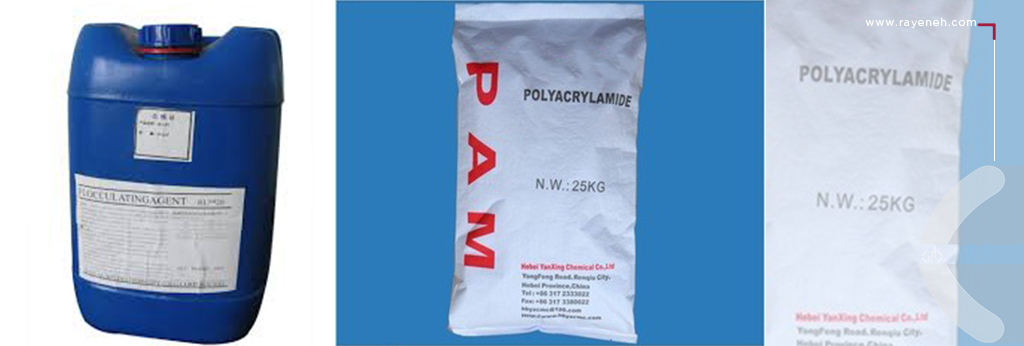
Flocculants are polymers with a long polymer chain of carbon atoms along with active groups. The mechanism of action of flocculants is that flocculant active groups can be absorbed on the surface of particles, and in this way, the flocculant chain keeps a large number of particles together in a clot, and a collection of particles is created.
A collection of particles will settle faster than individual particles due to their weight. Flocculants are ionized as soon as they are dissolved in water and according to the functional groups attached to them, they are divided into 3 categories: anionic, cationic and neutral.
Flocculants and coagulants are substances that are widely used to separate solid particles in water.
Flocculants such as polyacrylamide are mainly produced by inverse emulsion or precipitation polymerization.
In the inverse emulsion method, the aqueous solution of acrylamide is dispersed in an oily phase by a suitable emulsifier, and polymerization begins with a water-soluble or oil-soluble initiator.
Application
- Reduction of aluminum sulfate and as a result reduction of production sludge
- Extractive industries
- chemicals
- pharmaceutical industry
- Food and beverage industries
- Textile industry
- Paint and leather industry
- Oil and gas drilling
- Solids recycling
- Water and sewage treatment
- Agricultural industry
Packing
If these chemicals are used in liquid form, they are packed in 100, 150 and 200-liter polymer containers. In solid form, they packed in 25 kg bags.
